Abstract
1. The steady-state intracellular membrane potential of fibres in thin bundles dissected from mouse extensor digitorum longus or soleus muscles or rat sternomastoid muscles was measured with 3 M-KCl glass micro-electrodes. The steady-state membrane potential was found to depend on the extracellular concentrations of Na, K and Cl ions. 2. The resting membrane potential (3.5 mM-[K]o, 160 mM-[Cl]o) was -74 +/- 1 mV (mean +/- S.E.) and a reduction in [Cl]o to 3.5 mM caused a reversible steady-state hyperpolarization to -94 +/- 1 mV (mean +/- S.E.). 3. The steady-state membrane potentials recorded in fibres exposed to different [K]o and zero [Cl]o were consistent with potentials predicted by the Goldman, Hodgkin & Katz (GHK) equation for Na and K. The results of similar experiments done with Cl as the major external anion could not be fitted by the same equation. 4. The GHK equation for Na, K and Cl did fit data obtained from fibres in solutions containing different [K]o with Cl as the major external anion if the intracellular Cl concentration was allowed to be out of equilibrium with the steady-state membrane potential. 5. It is suggested that an active influx of Cl ions controls the intracellular Cl concentrations in these fibres and hence maintains the Cl equilibrium potential at a depolarized value with respect to the resting membrane potential. 6. The steady-state membrane potential of rat diaphragm fibres was independent of [Cl]o and it seems likely that the intracellular Cl concentration of these fibres is not controlled by active Cl transport.
Full text
PDF
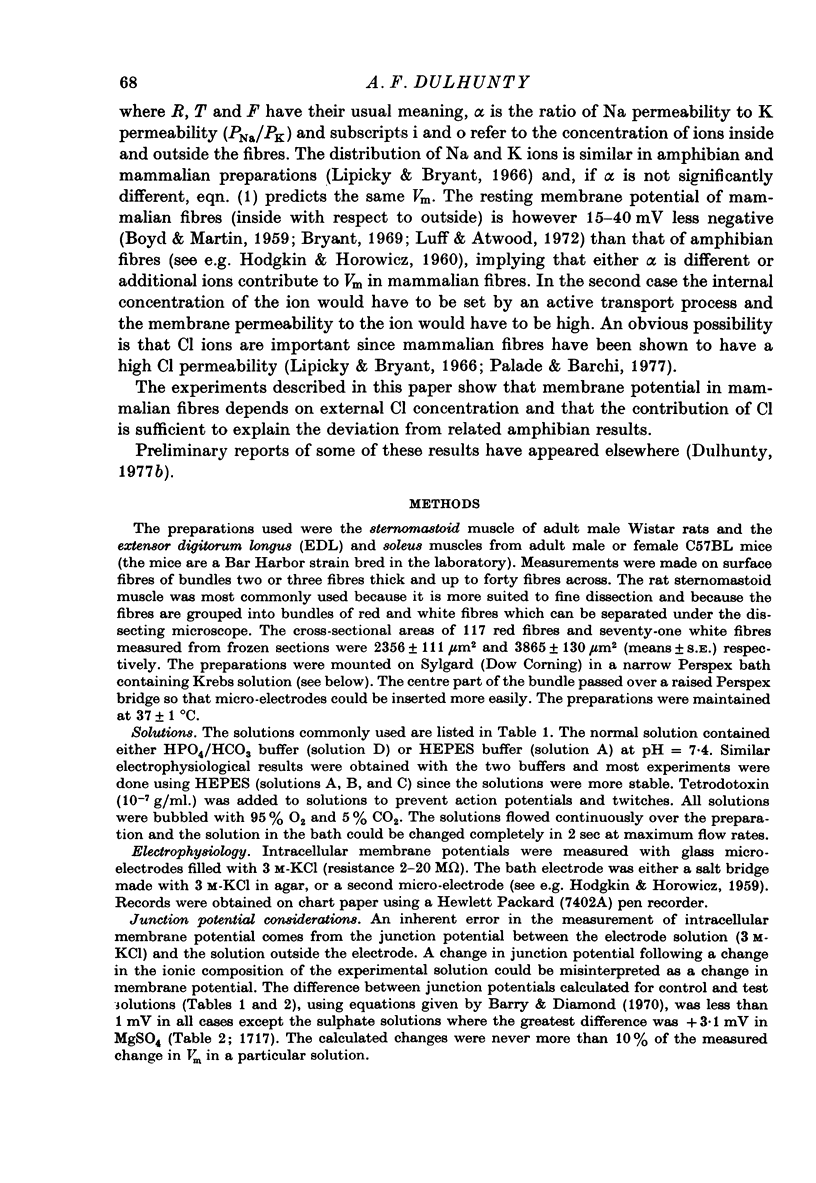
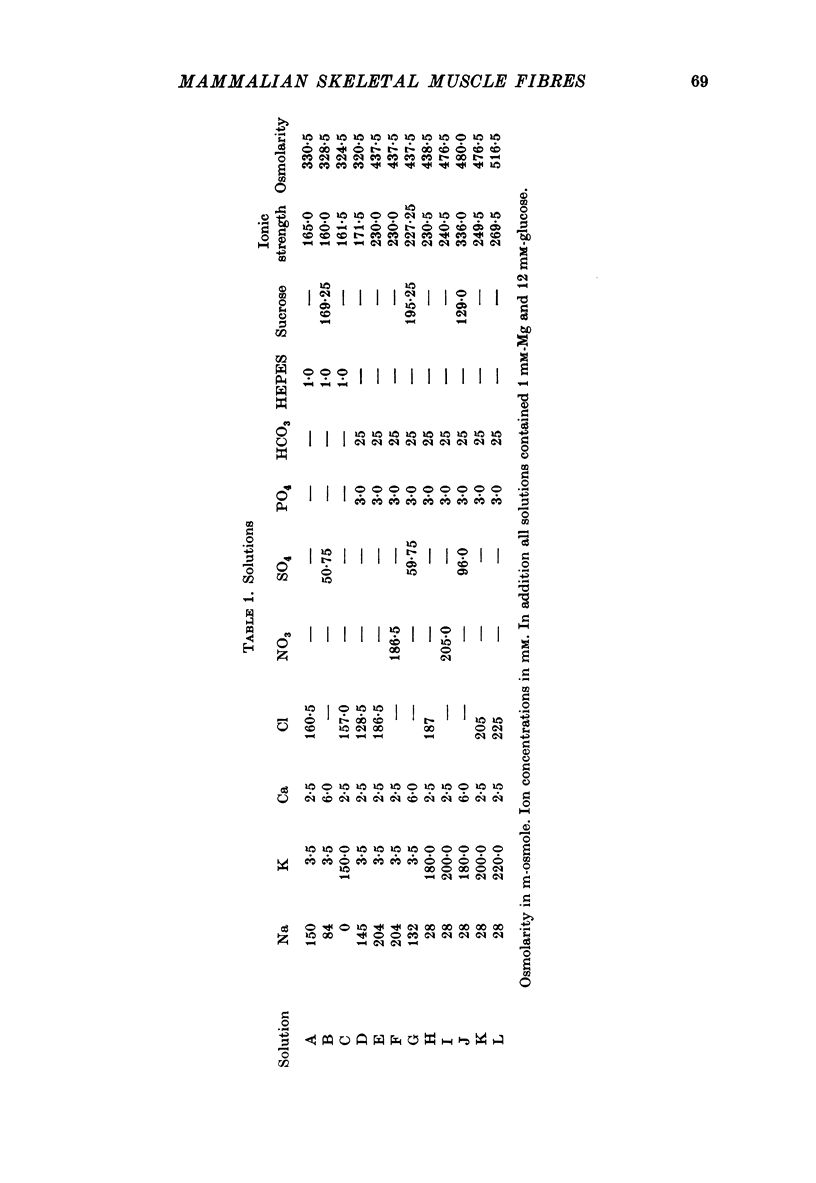
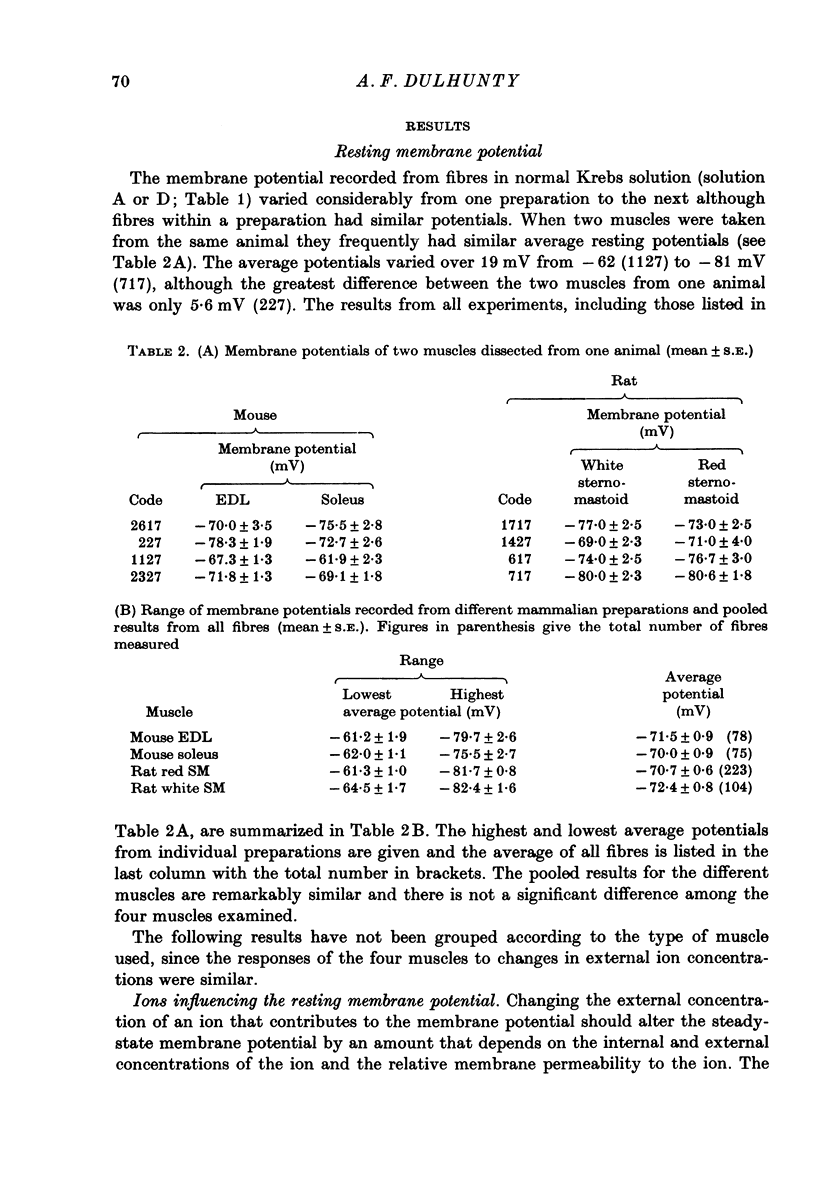
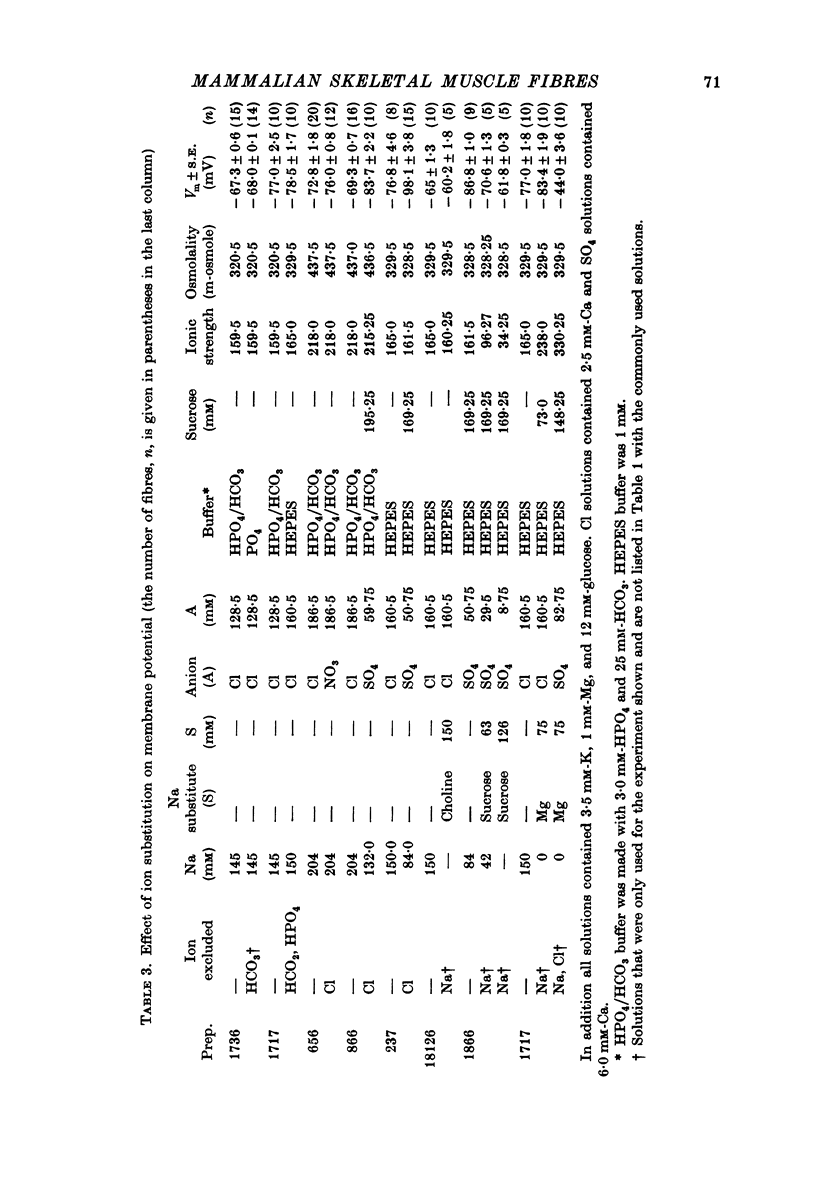
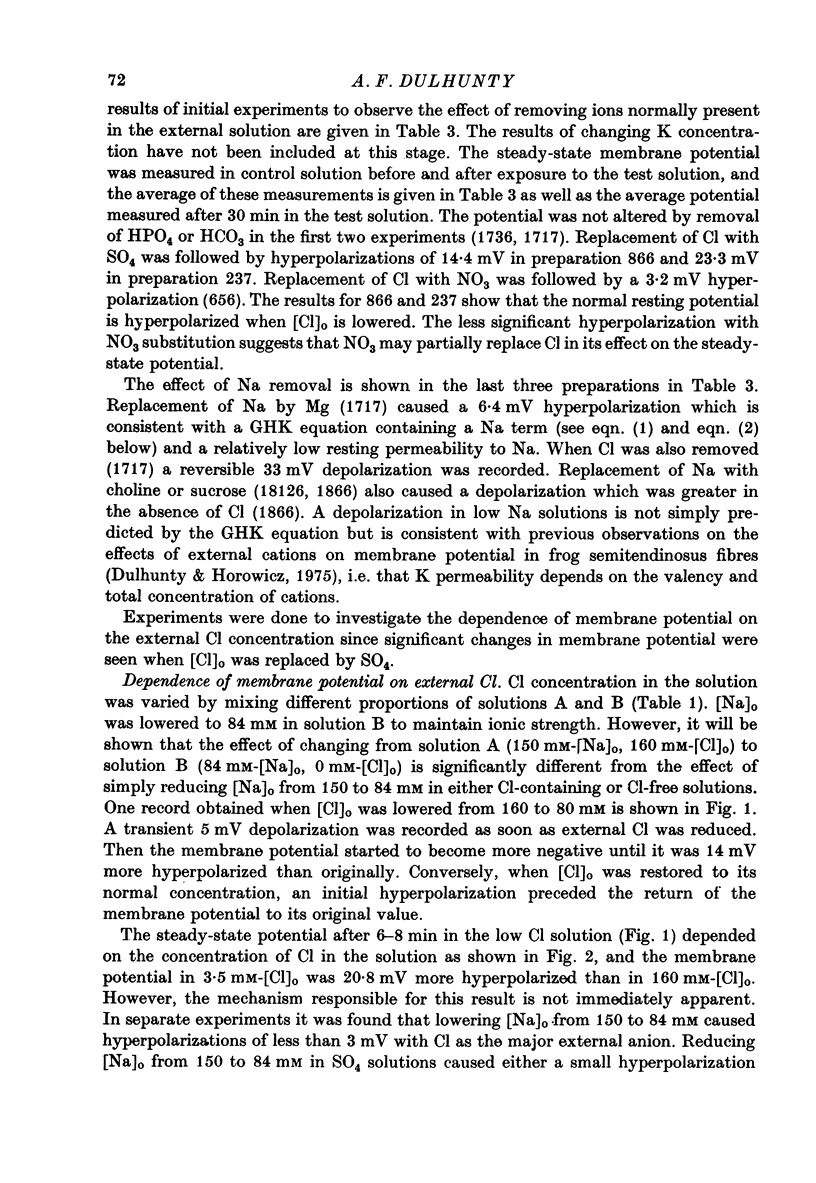
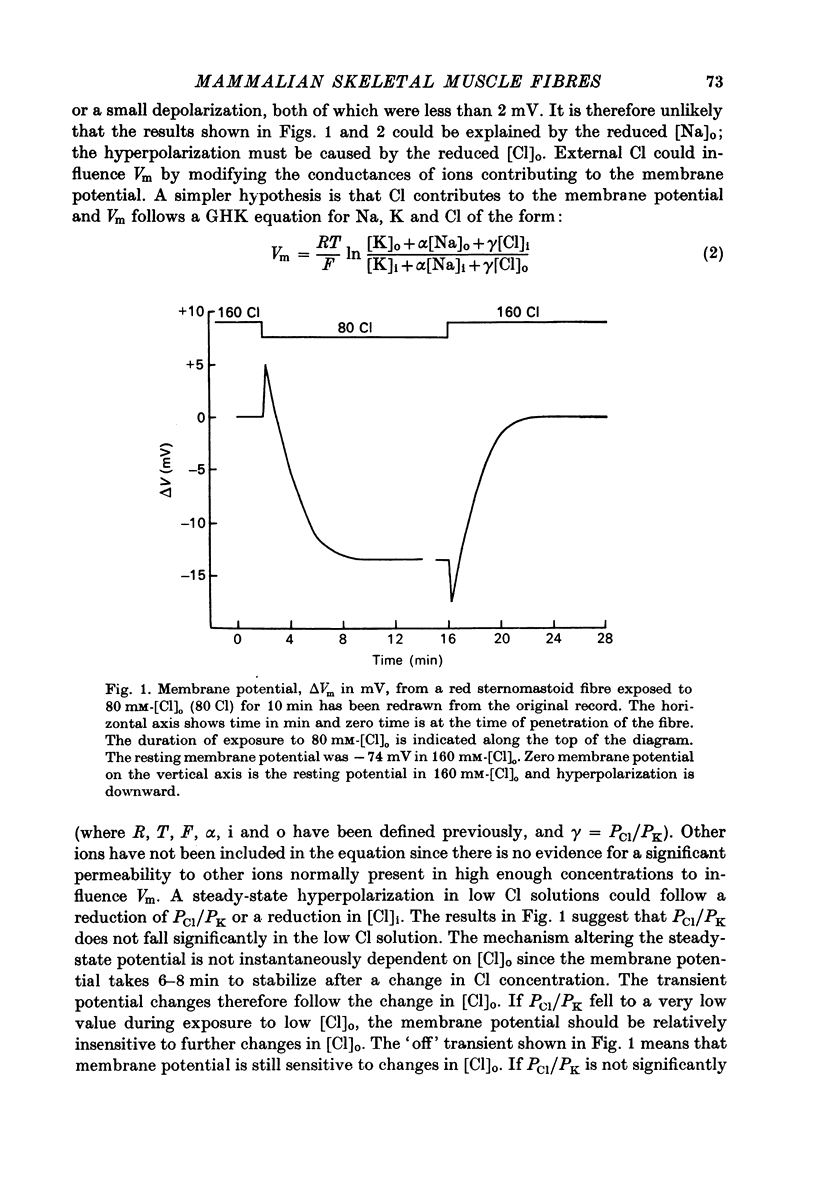
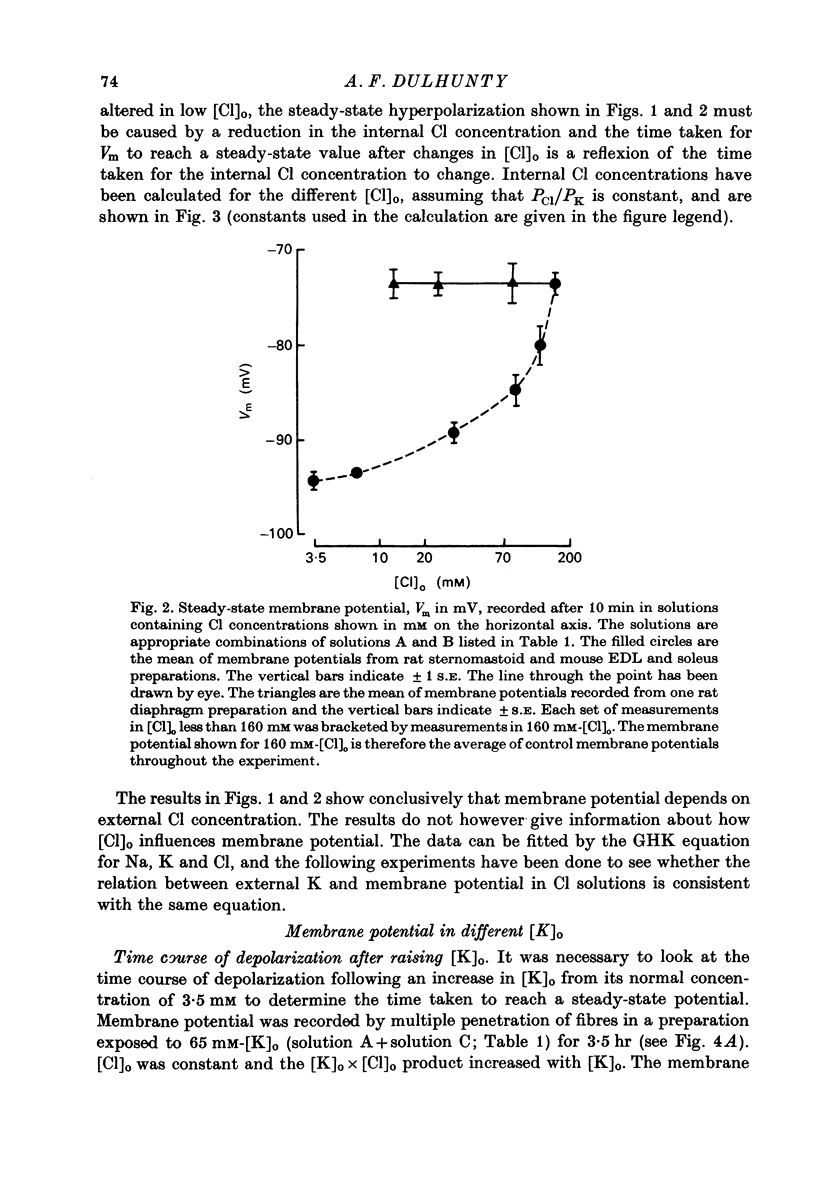
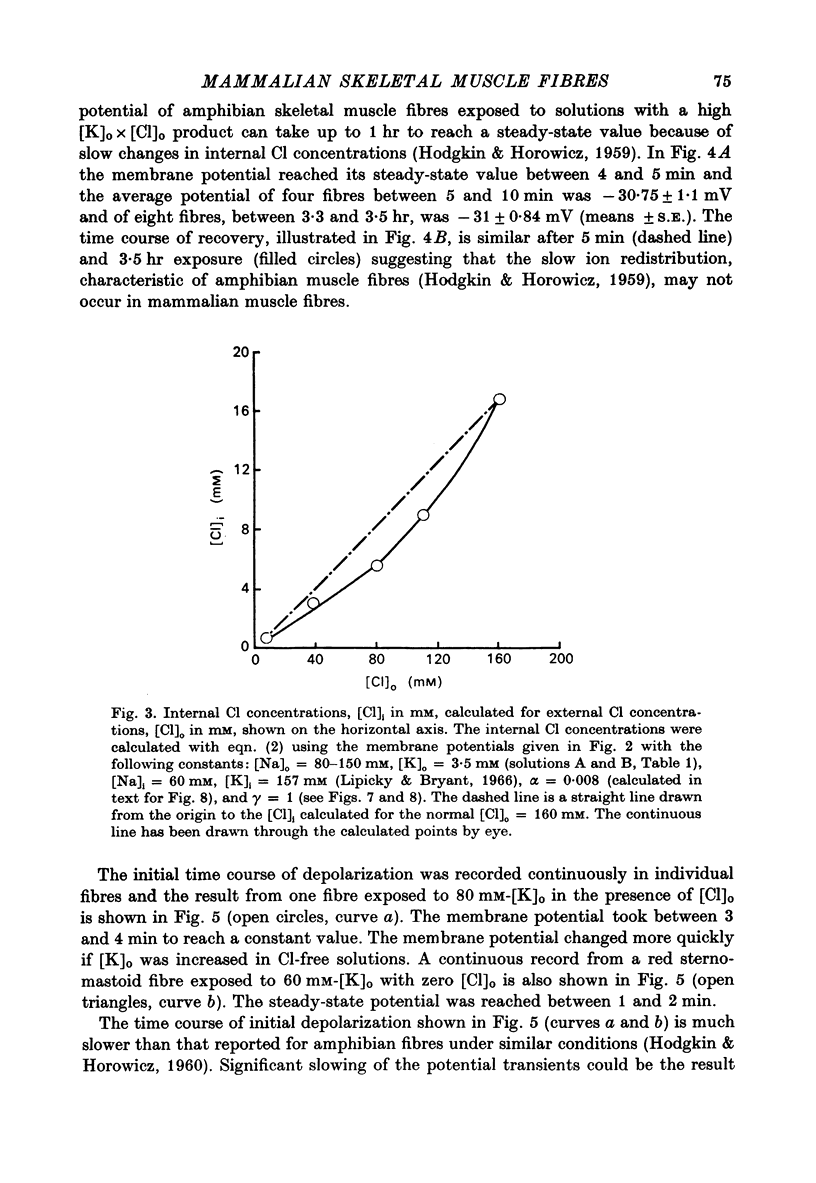
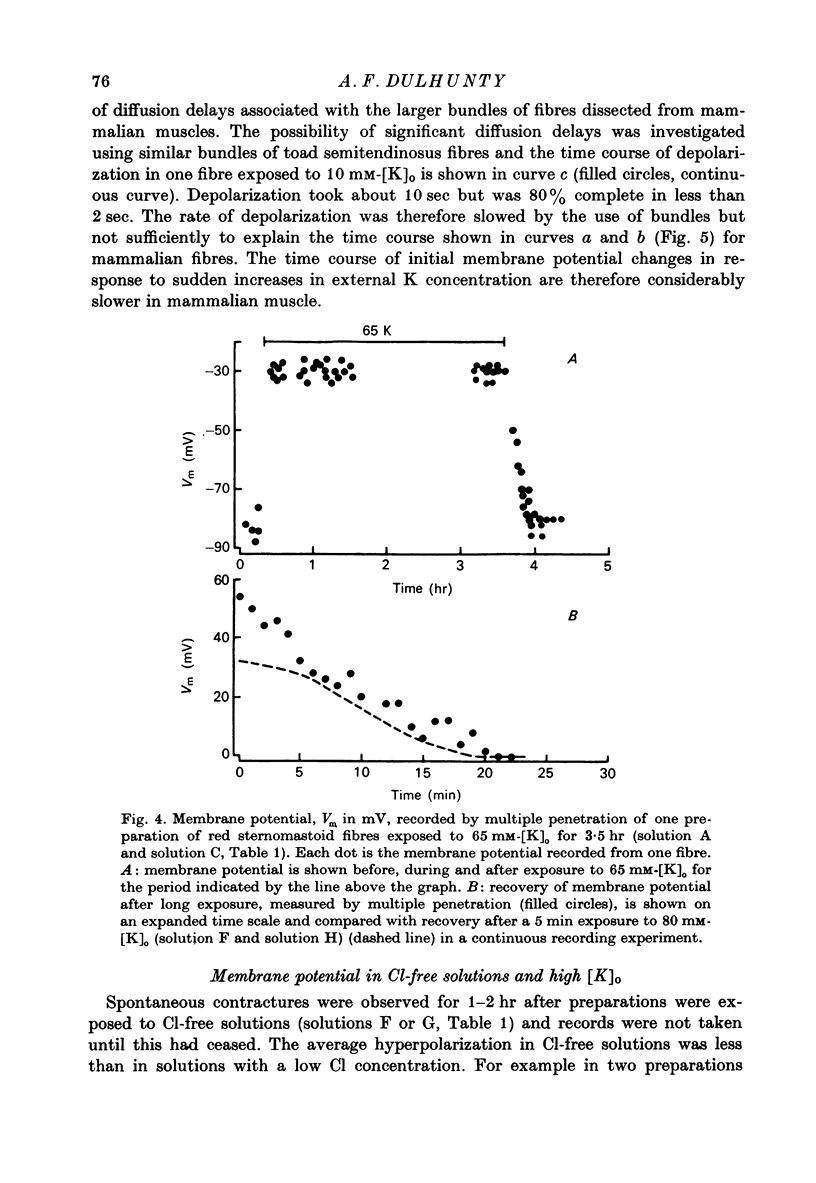
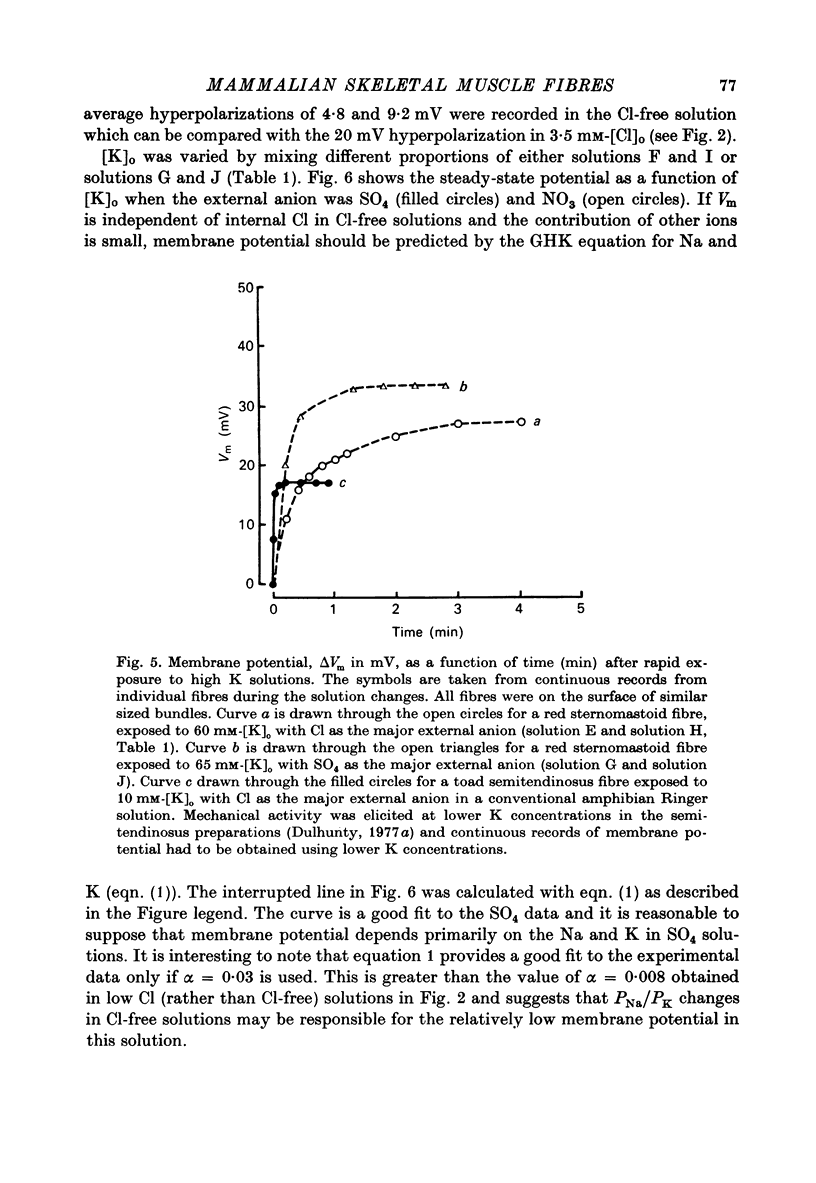
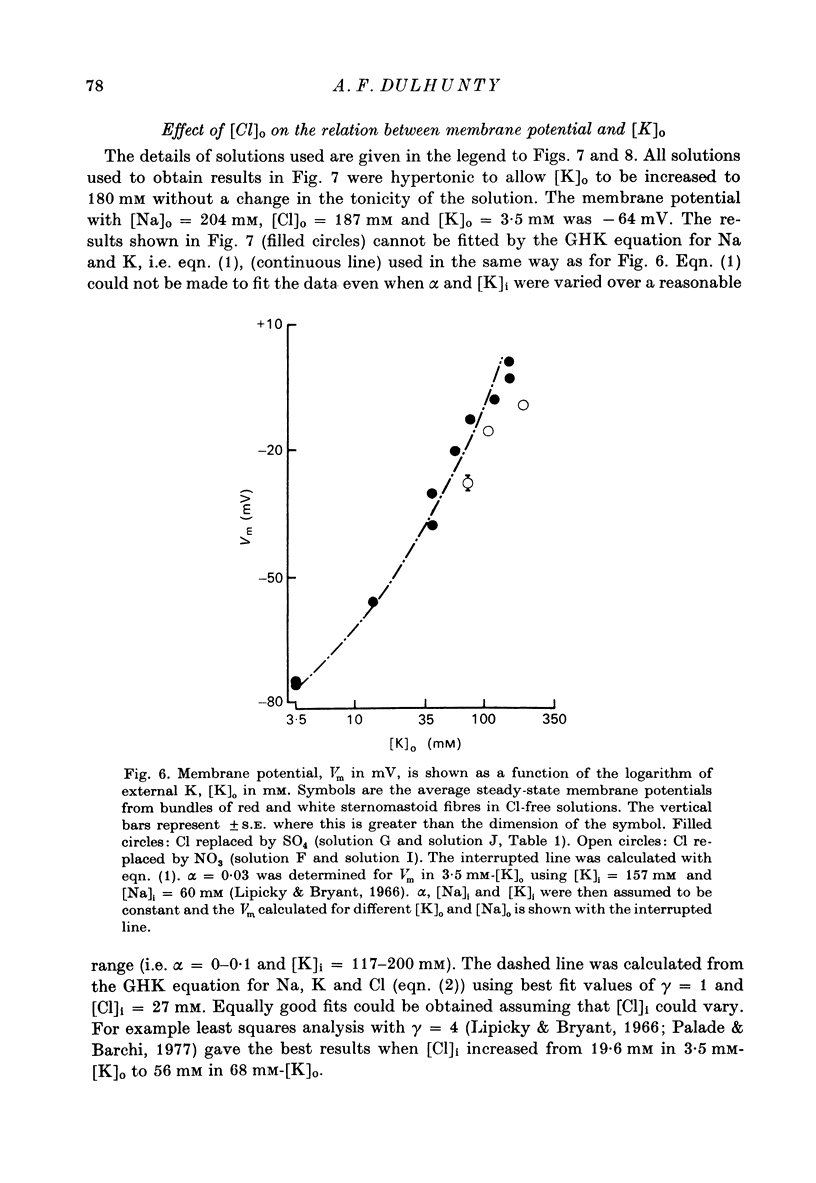
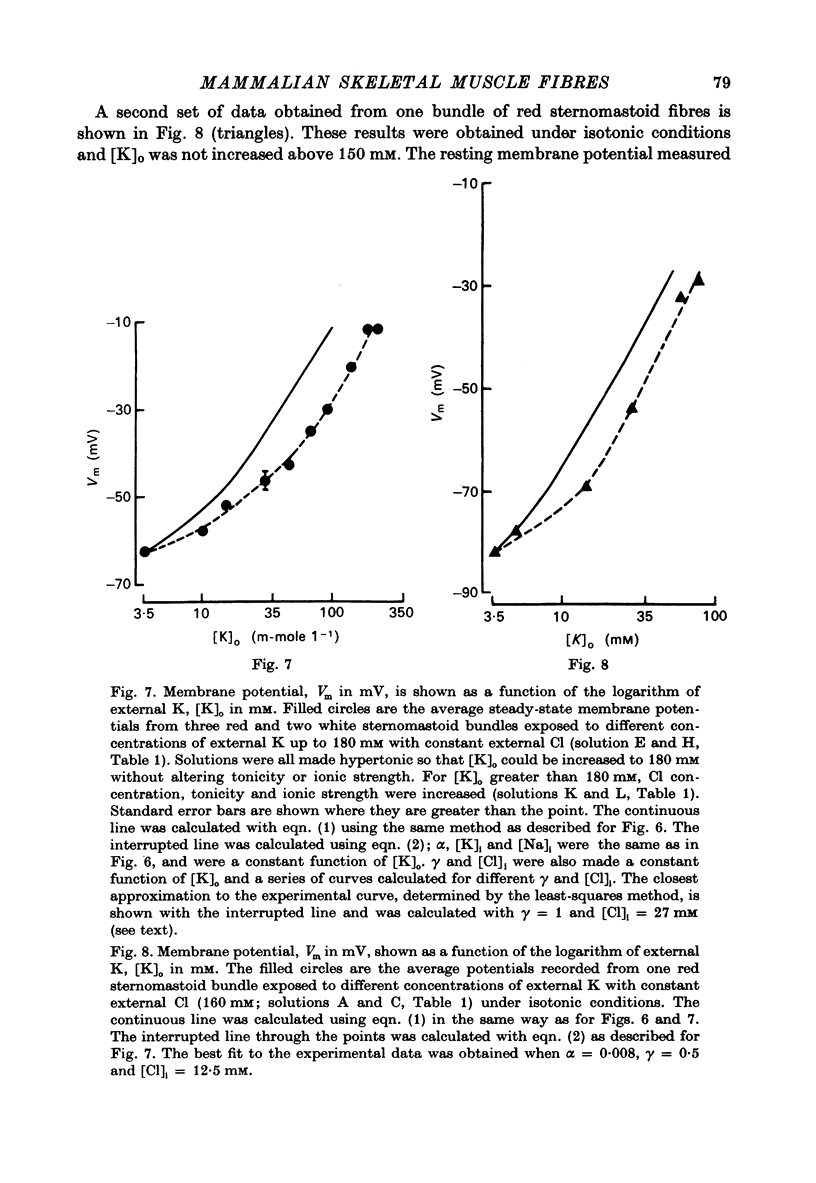
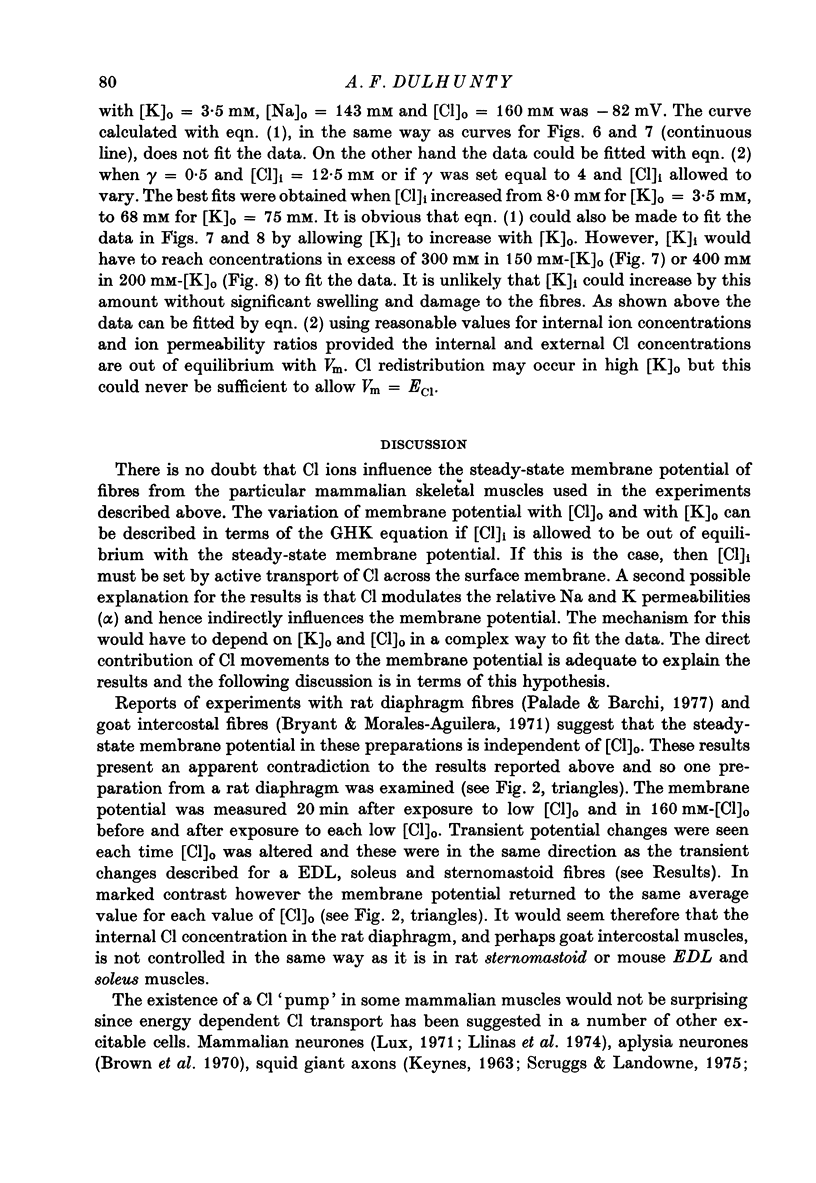


Selected References
These references are in PubMed. This may not be the complete list of references from this article.
- BAKER P. F., HODGKIN A. L., SHAW T. I. The effects of changes in internal ionic concentrations on the electrical properties of perfused giant axons. J Physiol. 1962 Nov;164:355–374. doi: 10.1113/jphysiol.1962.sp007026. [DOI] [PMC free article] [PubMed] [Google Scholar]
- BOYD I. A., MARTIN A. R. Membrane constants of mammalian muscle fibres. J Physiol. 1959 Oct;147:450–457. doi: 10.1113/jphysiol.1959.sp006255. [DOI] [PMC free article] [PubMed] [Google Scholar]
- Brown A. M., Sutton R. B., Walker J. L., Jr Increased chloride conductance as the proximate cause of hydrogen ion concentration effects in Aplysia neurons. J Gen Physiol. 1970 Nov;56(5):559–582. doi: 10.1085/jgp.56.5.559. [DOI] [PMC free article] [PubMed] [Google Scholar]
- Bryant S. H. Cable properties of external intercostal muscle fibres from myotonic and nonmyotonic goats. J Physiol. 1969 Oct;204(3):539–550. doi: 10.1113/jphysiol.1969.sp008930. [DOI] [PMC free article] [PubMed] [Google Scholar]
- Bryant S. H., Morales-Aguilera A. Chloride conductance in normal and myotonic muscle fibres and the action of monocarboxylic aromatic acids. J Physiol. 1971 Dec;219(2):367–383. doi: 10.1113/jphysiol.1971.sp009667. [DOI] [PMC free article] [PubMed] [Google Scholar]
- DiPolo R. Chloride fluxes in isolated dialyzed barnacle muscle fibers. J Gen Physiol. 1972 Oct;60(4):471–497. doi: 10.1085/jgp.60.4.471. [DOI] [PMC free article] [PubMed] [Google Scholar]
- Eisenberg R. S., Gage P. W. Ionic conductances of the surface and transverse tubular membranes of frog sartorius fibers. J Gen Physiol. 1969 Mar;53(3):279–297. doi: 10.1085/jgp.53.3.279. [DOI] [PMC free article] [PubMed] [Google Scholar]
- Funder J., Wieth J. O. Chloride transport in human erythrocytes and ghosts: a quantitative comparison. J Physiol. 1976 Nov;262(3):679–698. doi: 10.1113/jphysiol.1976.sp011615. [DOI] [PMC free article] [PubMed] [Google Scholar]
- HODGKIN A. L., HOROWICZ P. The effect of sudden changes in ionic concentrations on the membrane potential of single muscle fibres. J Physiol. 1960 Sep;153:370–385. doi: 10.1113/jphysiol.1960.sp006540. [DOI] [PMC free article] [PubMed] [Google Scholar]
- HODGKIN A. L., HOROWICZ P. The influence of potassium and chloride ions on the membrane potential of single muscle fibres. J Physiol. 1959 Oct;148:127–160. doi: 10.1113/jphysiol.1959.sp006278. [DOI] [PMC free article] [PubMed] [Google Scholar]
- Hagiwara S., Gruener R., Hayashi H., Sakata H., Grinnell A. D. Effect of external and internal pH changes on K and Cl conductances in the muscle fiber membrane of a giant barnacle. J Gen Physiol. 1968 Nov;52(5):773–792. doi: 10.1085/jgp.52.5.773. [DOI] [PMC free article] [PubMed] [Google Scholar]
- Horowicz P., Gage P. W., Eisenberg R. S. The role of the electrochemical gradient in determining potassium fluxes in frog striated muscle. J Gen Physiol. 1968 May 1;51(5):193–203. [PMC free article] [PubMed] [Google Scholar]
- KEYNES R. D. CHLORIDE IN THE SQUID GIANT AXON. J Physiol. 1963 Dec;169:690–705. doi: 10.1113/jphysiol.1963.sp007289. [DOI] [PMC free article] [PubMed] [Google Scholar]
- Llinas R., Baker R., Precht W. Blockage of inhibition by ammonium acetate action on chloride pump in cat trochlear motoneurons. J Neurophysiol. 1974 May;37(3):522–532. doi: 10.1152/jn.1974.37.3.522. [DOI] [PubMed] [Google Scholar]
- Luff A. R., Atwood H. L. Membrane properties and contraction of single muscle fibers in the mouse. Am J Physiol. 1972 Jun;222(6):1435–1440. doi: 10.1152/ajplegacy.1972.222.6.1435. [DOI] [PubMed] [Google Scholar]
- Lux H. D. Ammonium and chloride extrusion: hyperpolarizing synaptic inhibition in spinal motoneurons. Science. 1971 Aug 6;173(3996):555–557. doi: 10.1126/science.173.3996.555. [DOI] [PubMed] [Google Scholar]
- Palade P. T., Barchi R. L. Characteristics of the chloride conductance in muscle fibers of the rat diaphragm. J Gen Physiol. 1977 Mar;69(3):325–342. doi: 10.1085/jgp.69.3.325. [DOI] [PMC free article] [PubMed] [Google Scholar]
- Russell J. M. ATP-Dependent chloride influx into internally dialyzed squid giant axons. J Membr Biol. 1976 Sep 17;28(4):335–349. doi: 10.1007/BF01869704. [DOI] [PubMed] [Google Scholar]


